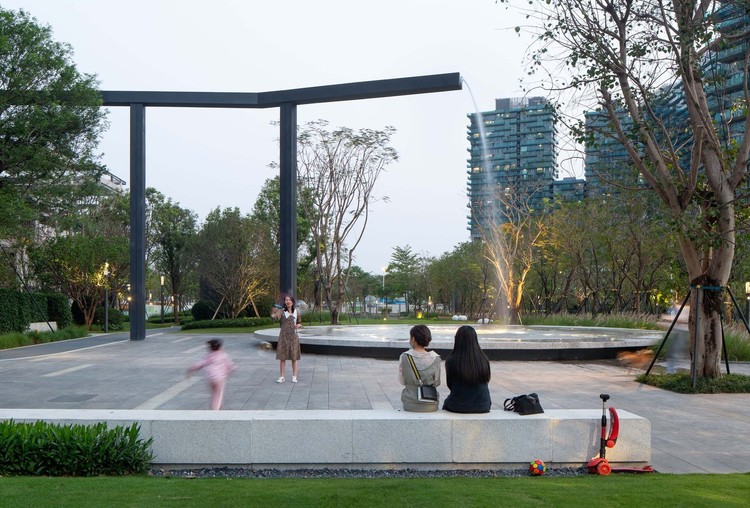
World Architecture Day, celebrated on the first Monday of every October, was set up by the Union International des Architects (UIA) back in 2005 to “remind the world of its collective responsibility for the future of the human habitat”, coinciding with UN-Habitat's World Habitat Day.
To mark this occasion, ArchDaily's curators and editors decided to pick a series of articles that capture the major challenges and trends that are shaping the built environment around the world.
It is worth noting that some topics span multiple categories, or can be re-categorized depending on how we frame the built environment and our human habitat. In short, if transformation is going to happen, it must be global.
Public Spaces: The Heart of Societies
We once believed Facebook would become the modern agora of societies, and apps such as Pokemon Go! would be the main drivers urging humans to come back to public spaces. In an era where we're reevaluating the bases of our societies and economies, fortunately, public spaces have become more relevant and more desirable than ever.
Places of Protest, Expression and Social Engagement

Revitalized Public Spaces: Fostering Human Connections in Cities
_Daria_Scagliola_01.jpg?1601591489)
Shared Space in an Increasingly Dense Architecture

The Challenges and Opportunities of Urban Regeneration in Gentrified Areas of China

11 Steps to Achieve Quality Public Spaces at a Neighborhood Level: UN-Habitat's Guideline

Technologies: From the Internet of Things to Artificial Intelligence
A few years ago, we asked our readers whether automation would affect architecture. Most of the readers believed back then that human creativity wouldn't be replaced by some random bot, but the truth is, new technologies are everywhere —and for the better, in most cases. Therefore, do not expect some humanoid robots to replace you soon.
Systems to Design a Smart and Contactless Home

How Will Generative Design Impact Architecture?

AI Can Only Help Architecture if We Ask the Right Questions
Climate Crisis: Now or Never
It isn't about believing climate change is real. It's happening, regardless of what you might believe. We as citizens must address it, now.
How to Transform a Polluted Indoor Environment into a Healthy Home

Tips for Using Rainwater in Architectural Projects

Zero Waste in Architecture: Rethink, Reduce, Reuse and Recycle

A Guide to Design for Disassembly

How Are Construction Materials Produced and How Does This Contribute to the Climate Crisis?

Why Should We Invest in Mitigation Instead of Reconstruction? Chile's Resiliency is a Good Example

Societies: How Will We Live Together?
“We need a new spatial contract," wrote Hashim Sarkis a year ago when introducing the Venice Biennale 2020 theme (well, 2021). "In the context of widening political divides and growing economic inequalities, we call on architects to imagine spaces in which we can generously live together".
A New Urban Model for a New Project of Society: An Interview with Tainá de Paula

6 Initiatives that Empower Women in the Architectural and Construction Sectors

LGBTQIA+ Experience in the City and in the Architectural Field, According to Our Readers

"I Grew Up Where Architecture Was Designed to Oppress": Wandile Mthiyane on Social Impact and Learning from South Africa

Butterfly Effect: 4 Principles for Fighting Global Issues Through Architecture

Beatriz Colomina on Gender, Collaborative Work, and Disease in Architecture

Social Inequality, As Seen From The Sky

Post-COVID-19 Typology Trends
As soon as we had to stay at home, we began looking to the future. It is still too soon to call it, but flexible workspaces, wellbeing and mental health as a must on our upcoming projects, the revival of mix-use projects, a revolution in healthcare project design (as it happened after the 1918 Flu Pandemic), and the reconfiguration of sharing economy as we understood it before COVID-19 are among our medium-term bets.
Solutions for More Flexible Workspaces

Incorporating Commercial, Cultural and Industrial Programs in a Home

Youth Centers: Places to Develop Physical, Social, Emotional, and Cognitive Abilities

Interior Design Trends That Will Shape the Next Decade

The Future of the Sharing Economy in the COVID-19 Aftermath

What a Yeast Sachet Can Tell Us About the Cities of the Future

Selection curated by Hana Abdel Latif, María Gonzalez, Clara Ott, Paula Pintos, Antonia Piñeiro, Romullo Baratto, Fabian Dejtiar, Matheus Pereira, Eduardo Souza, and Nicolas Valencia.


